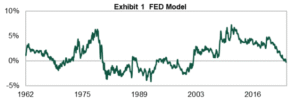Rethinking RFPs: Transforming Procurement’s Greatest Pain Points with AI
In 2011, when Marc Andreessen famously said, “Software is eating the world,” the enterprise software market was valued at $300 billion, making up a respectable 19% of the broader IT market. Today at IDC, we project the market will skyrocket to $1.6 trillion in 2026, capturing 39% of the IT landscape. This explosive growth means that the role of the CIO is evolving, too. Traditionally, the CIO has been responsible for maintaining operational efficiency and minimizing risks. But now, he or she is also expected to drive digital transformation and generate new revenue streams. In fact, our own research shows that 67% of CEOs expect their CIOs to lead digital transformation efforts in the next two years. And that starts with software procurement. Now, just saying the dreaded “p” word might trigger a stress response in any CIO who’s confronted this giant “elephant in the room.” Without the right tools and strategy in place, procurement can feel like an endless cycle of pain points — and every choice can feel like a high-stakes race. One wrong move, and you’re lagging — trampled with overpriced contracts and incompatible tech, or, worse, “supplier ghosting” when you’re desperate for support. The good news? A new wave of AI-powered procurement platforms is stepping up to help CIOs tame the beast. They promise to make procurement faster, smarter, and more strategic, saving your organization time and resources (and, saving your sanity too). Before we dive into why this shift matters — and how AI can transform the procurement process — let’s revisit the pain points that have been wreaking havoc for decades, starting with the all-important RFP. The RFP Challenge: Why It Matters Mastering the Request for Proposal (RFP) process is critical for CIOs. After all, procurement isn’t just about purchasing technology; it’s about aligning tech investments with your organization’s broader business goals, the cornerstone of digital transformation. Traditionally, the RFP process consists of several critical steps: Defining Requirements: Identifying business needs ensures alignment between your organization’s goals and the solutions you’re seeking. Market Research: Thorough research and analysis help identify suitable vendors and solutions. Drafting the RFP: The RFP must clearly communicate the requirements to vendors, soliciting bids. Evaluation: Proposals are assessed to determine the best fit against predefined criteria. Selection and Negotiation: The best solution is selected, and terms are negotiated to establish a successful partnership. The RFP process may seem straightforward — define the problem, invite vendors to bid, evaluate the options, and make the best choice. But if you’ve ever waded through piles of vendor responses, you know it can feel more like a maze of confusion, and losing your way comes with costly consequences. That’s why RFPs remain one of the most valuable yet frustrating aspects of procurement. Their potential to guide informed, strategic software selection is often undermined by: Lengthy Timelines: Traditional RFP processes can extend project implementation timelines by up to three times longer than anticipated. (IDC) Cost Overruns: Our own research found that 44% of CIOs cited the cost of sourcing exercises as their number one pain point in 2024, with external consultants and research adding to the expense. Resource Strain: IT teams, often lacking the business acumen for vendor selection, are burdened with time-intensive manual tasks like contract analysis and supplier evaluation. (CIO) When poorly executed, RFPs can create a domino effect of delays, misaligned vendor relationships, and wasted budgets. Of course, RFPs are just one piece of a larger puzzle. From resource-heavy sourcing exercises to integration challenges, the pain points in procurement can derail even the most promising tech initiatives. Overcoming Procurement Challenges with AI AI-powered procurement platforms can transform the process, helping CIOs overcome common hurdles and make decisions with confidence across the whole procurement lifecycle: 1. Streamlining RFPsWriting, distributing, and evaluating RFPs is like reinventing the wheel every time you need a new tech solution. It’s tedious, time-consuming, and rarely yields the insights you need to make confident decisions. Example: Looking for a new cybersecurity solution? An AI-powered platform drafts a tailored RFP, distributes it to vetted suppliers, and evaluates the responses based on predefined criteria. Fact: AI automates time-intensive tasks like vendor comparison, contract analysis, and data validation, slashing timelines and improving accuracy. (Financial Times) 2. More Confident Decision-MakingAI-powered tools can not only streamline research and reduce redundant trials, but they offer decision-making confidence based on insights from thousands of data points. Example: You’re launching a new office, and your team is stretched thin. AI handles the logistics of sourcing IT hardware, comparing costs, and ensuring timely delivery — freeing your team to focus on relationships and strategy.Fact: AI-driven insights empower CIOs to quickly evaluate vendors with data-backed precision, ensuring alignment with business goals. (McKinsey) 3. Proactive Risk ManagementAI doesn’t just find suppliers — it also screens them. From tracking delivery times to analyzing performance reviews, AI can help ensure you’re partnering with reliable vendors who won’t disappear when you need them most. Example: AI flags a supplier’s declining performance metrics before you renew their contract, saving you from a costly investment. Fact: AI tools quickly assess supplier risks, mitigate compliance issues, and increase transparency in the procurement process. (SAP) 4. Cost Optimization:AI procurement platforms excel at identifying cost-saving opportunities. They’ll flag overpriced contracts, suggest negotiation tactics, and even predict future price trends so you can strike while the iron’s hot. Example: AI notices your organization’s historical spend on IT procurement services and recommends consolidating vendors to unlock bulk discounts. Fact: AI-powered spend analysis highlights savings opportunities and eliminates unnecessary expenses. (McKinsey) 5. Speedy Analysis of Vendor OptionsAI thrives on data. It can analyze your needs, compare thousands of vendors in seconds, and deliver curated recommendations tailored to your specific goals. In short, AI narrows the field, so you’re not wasting time on irrelevant options. Example: You need a new cloud provider. An AI-powered platform evaluates costs, performance metrics, and integration capabilities across dozens of vendors, instantly highlighting the best fits. Fact: 79% of companies report challenges in purchasing B2B software
Rethinking RFPs: Transforming Procurement’s Greatest Pain Points with AI Read More »







